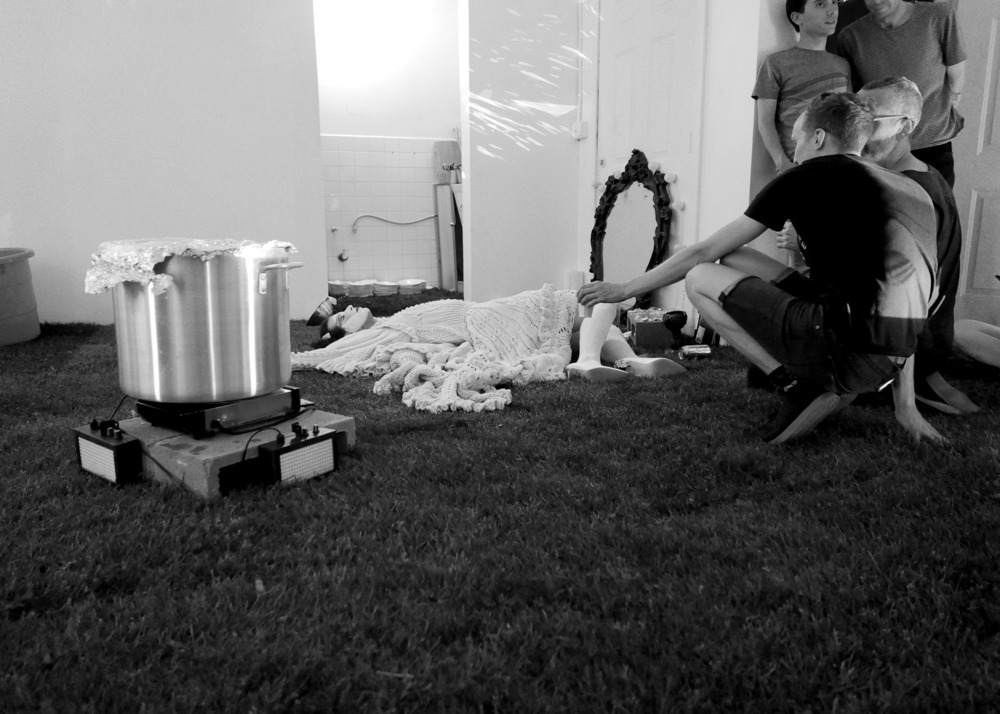
HOLY WOOLING
first performed on May 5, 2019
La Kaje, Brooklyn, NY
performed once in 2019
TAYLOR CLAYTON-BROOKS
Queens, NY
649056200t649056200a649056200y649056200l649056200o649056200r649056200c649056200l649056200a649056200y649056200t649056200o649056200n649056200b649056200r649056200o649056200o649056200k649056200s649056200@649056200g649056200m649056200a649056200i649056200l649056200.649056200c649056200o649056200m
HOLY WOOLING
TAYLOR CLAYTON-BROOKS
“Holy Wooling” was Queer Temple. Combining and recontextualizing traditional modes and environments, “Holy Wooling” explored gender, identity, and community through the rituals and labors of the queer domestic. Sound installation replaced voice as physical action, and deliberate, calculated articulation emphasized transformations of body into object, commodity into meal, and meadow into monument. The audience was encouraged to mill, converse, share, observe, and relax atop a field of real grass planted throughout the entirety of the space, which provided a platform of sensual texture and sensory euphoria to spring across a threshold into an eight-hour experience of altered queer reality. A backdrop of shifting light, animation, and pornography splashed along walls and ceiling while four hand-knit garments of unbleached white wool acted as the framework of transformation throughout the ritual.
From skeins of hearsay I wove an environment of queerness constructed from personal histories of religious and physical abuse, engaging a hybridized portrait of past and present by cultivating a grotesquely beautiful portrait of the self-reflexive, of dominant culture’s obsession with the exposition and critique of a faggot’s persona and place within culture. Repetitive labors of drag and pseudo-striptease occurred to combat these particular toxic modes of masculine expression. Rather than simply removing clothing as in traditional striptease, the process of revealing an “authentic” self was reversed through continuous undressing, dressing, and re-dressing parts and portions of the garments, enacting a kind of counter-striptease which didn’t seek the necessity to fetishize the material body, but instead mediated the ways in which, through costume and performance, one continuously makes the self. Each piece of the metamorphosing garment displayed different modalities of queerness, together depicting my perception, and perhaps reality, of the different positions within the gay male subcultural spectrum that I currently occupy.
The sequence itself works as a catalog of the various queer disguises of self-presentation developed as self preservation. “Holy Wooling” provided a meal, a funerary soup based in memories of childhood tortures spiced with an aroma of religiosity, prepared and presented as a simultaneous but distinctly separate performance, joining the striptease and drag elements through a physical act of queer domesticity. It was served on handmade hexagonal ceramics featuring homoerotic imagery carved on the bottoms, which were taken by audience members as a final act of intimacy and remembrance. An invitation to explore the queerness within themselves and each other through this environment and beyond.